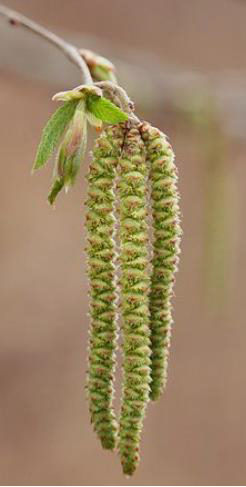

| Shadow tendency | Wholeness |
|---|---|
| Weariness is felt largely by the mind | Lively mind |
| State of exhaustion arising from one-sided demands on the mental plane | Has a lot of clarity |
| May be a characteristic of an affluent modern citizen who consumes too much and produces too little | Cool-headed |
| They may take in more impressions than he is able to digest mentally | Confident that one may be able to master challenges, even if they appear to be beyond one’s power. |
| Procrastination | Feels awake and fresh |
| Temporary or prolonged tiredness | Follows spontaneous impulses |
| Heavy-headed | Energetic |
| ‘Monday morning’ feeling | Doesn’t feel tired as they were before |
| Feels deprived of vigour | Gives emotional strength |
| Mental block | Lucidity |
| When waking up immediately doubts and worries whether the day’s chores can be coped with but is able to handle it as the day proceeds | Revitalised |
| After prolonged illness, slow to recover the will to return to work | Helps you get into action |
| Believes it is impossible to start work without stimulants, coffee, tea or some sort of tonic | |
| Comes to life when something unexpected occurs | |
| Life is too organised and has overwhelming routines | |
| Get up more tired in the morning than going to bed in the night | |
| Pressure or burning sensation around the eyes | |
| Often experiences connective tissue degeneration | |
| Little exercise | |
| Mental fatigue | |
| Tired feeling due to self-preoccupation | |
| Causes lethargy | |
| Apathy | |
| Over-burdened | |
| Don’t think we have sufficient energy to complete a specific chore as it is unstimulating | |
| Demotivated | |
| Everyday tasks seem insurmountable |
Origin and Specification of the Plant
Kingdom: Plantae
Family: Betulaceae
Genus: Carpinus
Species: C.betulus
Origin: Western Asia and Central, Eastern, and Southern Europe
Other names: common hornbeam. Charmille, European hornbeam, horn beech, horse beech, hurst beech, white beech, yoke elm
Elements/Chemicals contained by the plant: Pheophorbide
Foliage: Deciduous
Height: 12+ metres
Description: It is a slow-growing tree that can reach up to 25 meters in height with a round, dense crown. The bark is smooth and grey, and the leaves are oval-shaped with serrated edges. In the spring, the tree produces yellow-green flowers that are wind-pollinated. The fruit is a small nut that is contained within a leafy bract.
Flowering season:
Qualities and preferences: Grows well in fertile, well-drained soil in full sun or partial shade
Areas of Growth:
Carpinus Betulus is a popular tree for ornamental purposes, as it is often used for hedging and topiary due to its ability to tolerate pruning and shaping. It is also valued for its strong, hard wood, which is used for making furniture, flooring, and tool handles.
The etymology of Carpinus Betulus is rooted in Latin. The genus name Carpinus is derived from the Latin word "carpere," meaning "to pluck," referring to the fact that the tree's wood was once used to make yokes for oxen to plough fields. The species name Betulus is also derived from Latin, from the word "betula," which means "birch." This is likely due to the fact that the bark of Carpinus Betulus is smooth and grey, similar to that of a birch tree. The common name "European Hornbeam" is also derived from the tree's horn-like branches, which resemble the antlers of a deer.
Carpinus Betulus has been used for centuries in traditional medicine for its medicinal properties. The leaves of the tree contain several compounds, including flavonoids, tannins, and phenolic acids, that have been studied for their potential therapeutic effects. These compounds are believed to have anti-inflammatory and diuretic properties, making the leaves useful in treating conditions such as gout, rheumatism, and urinary tract infections.
The bark of Carpinus Betulus also contains several compounds, including tannins and triterpenes, that have been studied for their potential medicinal properties. The bark has been used as an astringent to treat diarrhoea and other digestive problems, and has also been used as a natural remedy for fever and pain relief.
In addition to its use in treating digestive and inflammatory conditions, Carpinus Betulus has also been used to treat respiratory problems such as bronchitis and asthma. The tree's leaves are believed to have expectorant properties, helping to clear mucus from the lungs and alleviate respiratory symptoms.
Specification of remedy
Emotional Group: Uncertainty
Emotional Response: Mental or physical tiredness
Method of extraction: Boiling
Hornbeam is connected with the soul potential of inner vitality and freshness of mind. Dr Bach first prepared the Hornbeam remedy in 1935, near Marlow, Buckinghamshire. We take thus remedy when everything seems too much work and experience a certain feeling , that is named ‘Monday morning’. The remedy helps us overcome procrastination and gives us the strength to focus and finish our tasks and goals.
Comparison between other flowers
Centaury people become easily tired like hornbeam but because their vitality is sapped by the over-doing of favours and responding to requests from other, not because of any disinclination to do thing like the hornbeam personality.
Elm:
The Hornbeam person suffers fatigue through a dislike for they are doing while the Elm person experiences a temporary exhaustion due to a momentary faltering of self-confidence and the overwhelming feeling of responsibility.
Olive:
The distinction between Olive and Hornbeam is that the Olive remedy is used for total exhaustion of body, mind and spirit. However, the Hornbeam remedy is utilised all but able to manage at all but it is found that one is managing after all.

The images on the right-hand side and left-hand side show a zoomed -in aspect of a part of the Hornbeam tree. These normally form on the tree around the Spring season.
